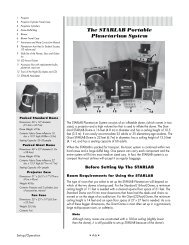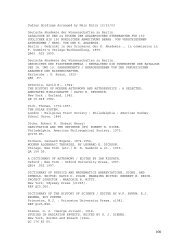K-6 Activities - Dudley Observatory
K-6 Activities - Dudley Observatory
K-6 Activities - Dudley Observatory
Create successful ePaper yourself
Turn your PDF publications into a flip-book with our unique Google optimized e-Paper software.
• paper<br />
• pencils<br />
• scissors<br />
Materials<br />
K–6 <strong>Activities</strong> • B–80 •<br />
Comparing the Size of the Planets<br />
Note<br />
To scale down the size of the planets, you can use any unit of measurement.<br />
The smallest unit can be the smallest planet. For example, you might use 1<br />
centimeter as 1 unit.<br />
Procedure<br />
• Mark off 1 unit on a piece of paper. This represents the diameter of Mercury.<br />
Make a circle from this diameter as shown.<br />
• Use the table below to measure the diameter of each planet.<br />
• Cut out and label each planet.<br />
• Discuss: Which planet is the largest? Which planet is the second largest? Which<br />
planets are about the same size as the earth? How might you compare the size<br />
of the sun with the size of each of the planets?<br />
• Suggestion: You might make a mobile out of your planets. Make the planets<br />
out of heavy paper or back them with cardboard and hang them on a clothes<br />
hanger.<br />
Units of Diameter<br />
Venus — 2 1 / 2 Jupiter — 29 Neptune — 9<br />
Earth — 2 3 / 5 Saturn — 25 Pluto — 1<br />
Mars — 2 2 / 5 Uranus — 10 Sun — 287





